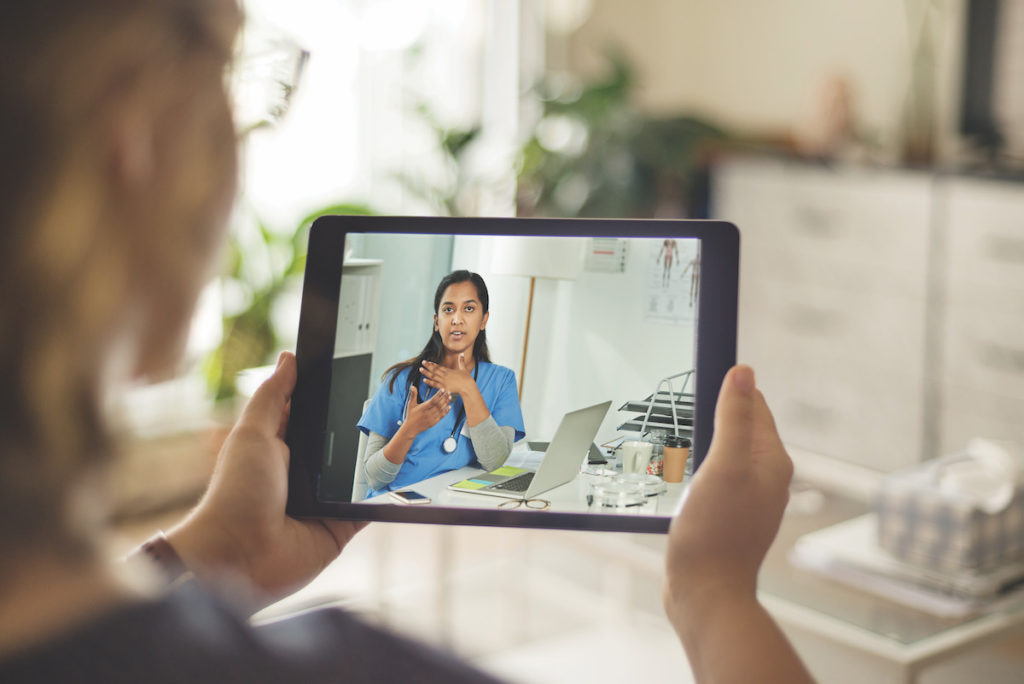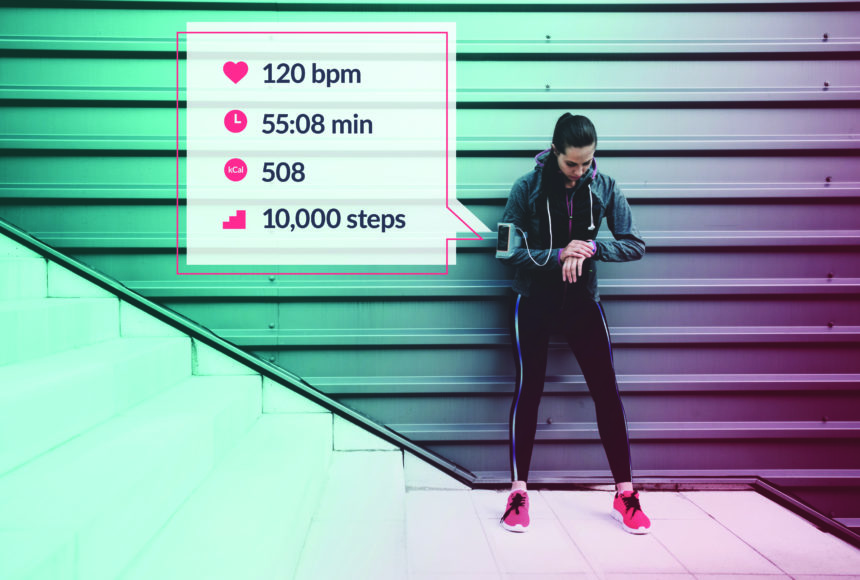For all the enthusiasm about the transformative potential of wearables and health apps — and the zettabytes of data they generate — healthcare providers have never really bought into the hype. The reason for this is more or less what you’d expect: As patients zealously track step counts, caloric intake, glucose levels and blood pressure readings, they unleash a torrent of information that, many doctors believe, impedes their ability to provide effective and efficient treatment.
But even before COVID-19 upended life as we know it, physicians had started to evolve their thinking on the utility of patient-collected information. Stanford Medicine’s 2020 Health Trends Report, released in January, revealed that 80% of doctors believe self-reported data from patients’ health apps is clinically valuable. An even greater percentage, 83%, said there’s clinical value in data received from wearable devices. And doctors are warming to the devices and apps themselves: 71% of doctors use them.
There are a few factors behind the collective change of heart. The first is that physicians trust the data they’re receiving more than they did at the dawn of the wearables era. According to Dr. Peter Alperin, VP of product at Doximity and a physician in private practice in San Francisco, that early skepticism was warranted.
“As a clinician, you’re trained to look at things with a jaundiced eye, particularly around hard data,” he explains. “You’re making important decisions about patient care.”
The less-than-enthusiastic early response among the HCP set had little to do with the technology, Alperin adds. Rather, it was fueled by the profession’s traditional mistrust of “the hot new thing” — which, he says, “sometimes turns out to be not that hot.” Given that the first priority of most physicians is to do no harm, most saw no reason to rush into the patient-reported data era without thoroughly vetting the devices and information from myriad angles.
Of course, a great majority of those devices have since proven both reliable and useful. While Alperin characterizes the shift in support among HCPs as gradual, he points to the arrival of the Apple Watch — the most recent model adds a feature that measures the saturation of oxygen in the user’s blood — as “the biggest point of inflection.” He notes that he has confirmed the accuracy of the watch’s readings against EKGs performed in his office. And while that firsthand experience may be anecdotal, he believes it offers “one more piece of validation.”
As a clinician, you’re trained to look at things with a jaundiced eye, particularly around hard data. You’re making important decisions about patient care.
Dr. Peter Alperin, Doximity and a physician in private practice in San Francisco
Priya Singh, Stanford Medicine’s chief strategy officer, agrees. She suggests another reason for the increase in physician confidence: an increasing volume of high-profile research, such as the Apple Heart Study, that has demonstrated the promise and utility of wearables.
Ogilvy chief digital officer for health Ritesh Patel adds that practical considerations also prompted the shift. For one thing, it wasn’t until the Centers for Medicare and Medicaid Services integrated “internet consultations” into its process that doctors were able to get paid for their time spent perusing self-collected data.
“Seeing a patient that they can bill for versus looking at data that they can’t bill for — doctors would always look at the patient they can bill for,” he explains.
Additionally, it was only recently that device manufacturers figured out how to reliably flow patient-reported data directly into electronic health records. Before that stubborn technological and connectivity problem was solved, doctors had to log into one portal to view the patient’s “official” health record and another to view self-reported information.
“If, as a cardiologist, I wanted to look at the Alivecor EKG data, I had to go to a special portal that was created for me by Alivecor and create a user ID and password and all that sort of stuff,” Patel recalls. “Now, some of the data is now being sent directly to the EHR, so I’m only going to one place.”
Hurdles still remain. Just because some data has proven clinically valuable doesn’t mean all of it will, which means that doctors continue to find themselves poring over reams of semi-relevant information. Singh says that while Stanford’s research found that physicians are open to using data from novel sources as part of routine patient care, concerns about processing data persist.
“The world of wearables data is something of a Wild West, with data coming in from many different points and no common infrastructure for aggregation and analysis,” she writes in response to emailed questions. “That’s a problem.”
Still, there’s a time and place for patient-generated data. For instance, it’s helpful for cardiologists to keep tabs on patients who just underwent heart surgery. There are limits, of course, as Patel notes. “Do I want you to wear your watch and send me your EKG every two minutes? Definitely not.”
Alperin says that as a primary care physician, he already has plenty of information at his disposal — and that data from wearables and health apps only add to the glut. His concern is that the latter “is not necessarily actionable information.” The key, he stresses, is to understand which data to prioritize for which patient. “As a clinician, you have to be comfortable excluding things.”
Singh says her major question is how to harness the potential of wearables data in a way that is helpful rather than burdensome. This creates a very real quandary: Physicians report spending more than half their time on administrative tasks, many of which involve entering data into EHRs. It goes without saying that doctors didn’t become doctors because they were eager to perform routine data entry.
“As we think about integrating wearables data into our healthcare system, we cannot lose sight of physician well-being and preserving the human element of medicine,” she says.
The utility of health apps and wearables has shifted dramatically since the arrival of COVID-19. As patients abandoned waiting and exam rooms for all but their most critical health issues, they turned in greater numbers to telemedicine. “The pandemic has changed everything that we do,” Alperin says plainly. “I’m more likely to ask about a wearable because I’m less likely to be able to get the information directly from the patient in my office.”
Alperin’s experience lines up neatly with Stanford’s data. While the volume of research on wearables and other patient-controlled devices had started to expand before the COVID shutdown, Singh says that it has exploded in recent months, with new research collaborations announced seemingly every week.

Stanford itself has rapidly scaled telehealth in response to COVID-19. “Practically overnight, we went from conducting 2% of our clinical visits virtually to over 70%,” Singh reports. Previously, there were few vendor options beyond Amwell and Teladoc, but a flood of new players have entered the market. There’s even a HIPAA-compliant version of Zoom.
That shift has led to a reimagining of how more clinically meaningful interactions with patients can be created in a remote setting. Considering how telehealth surged when conditions favorable to its growth presented themselves, it stands to reason that physicians will grow more and more open to accepting data culled from digital wearables and sensors as well, particularly as research validates remote care models.
In many ways, COVID-19 has hastened the arrival of a new technological era in medicine. Patel says that the model for general practitioners will likely change post-pandemic, with most relying more heavily on digital processes. This development should be received warmly by patients with conditions that require regular monitoring, such as those with diabetes or heart conditions.
Singh also predicts that virtual care will remain popular post-pandemic. However, she cautions that the rate of adoption will be heavily influenced by the amount of friction it causes. Some of this, of course, is cultural, but also speaks to the importance of implementation.
“Even if a wearable is clinically validated, doctors aren’t going to use it if it’s not intuitive to how they work or care for patients,” she explains.
Alperin adds that the next generation of wearables and devices will enable patients to more closely monitor themselves, whether or not they share the data with their healthcare providers. In fact, that in itself may prove an equally valuable benefit.
“If you’re using a diet app, the biggest benefit isn’t the list of food. It’s the fact that you have to record it,” he says. “I have to write down that I’m about to eat a cupcake. Maybe I won’t eat it.”
From the October 01, 2020 Issue of MM+M - Medical Marketing and Media








